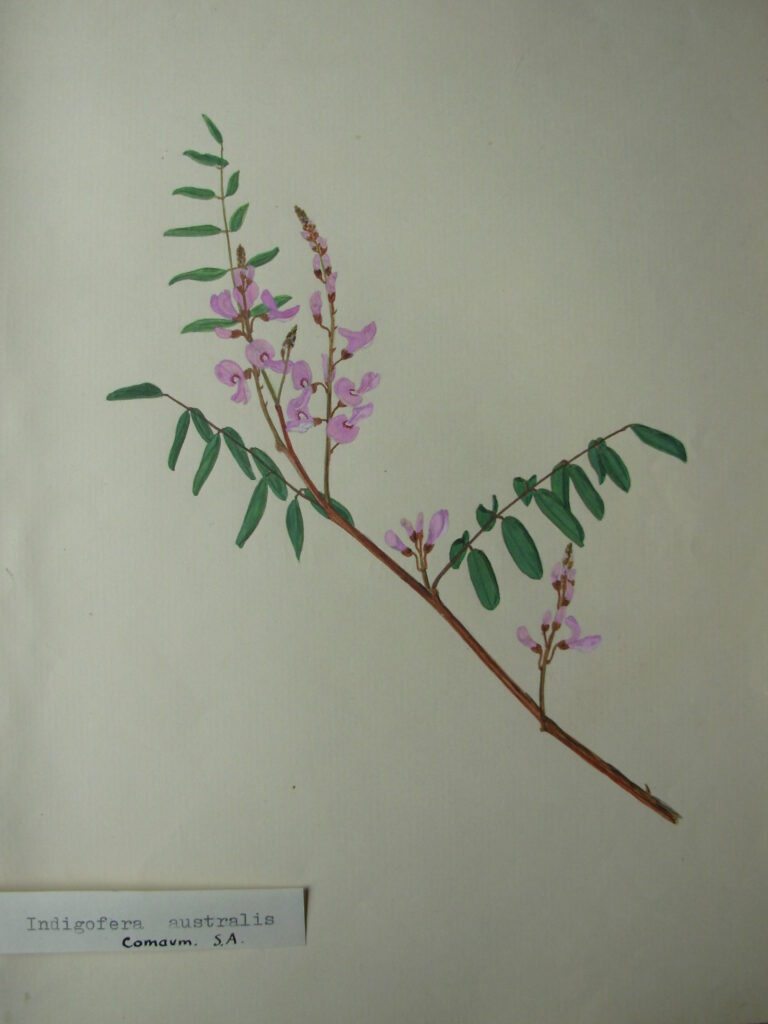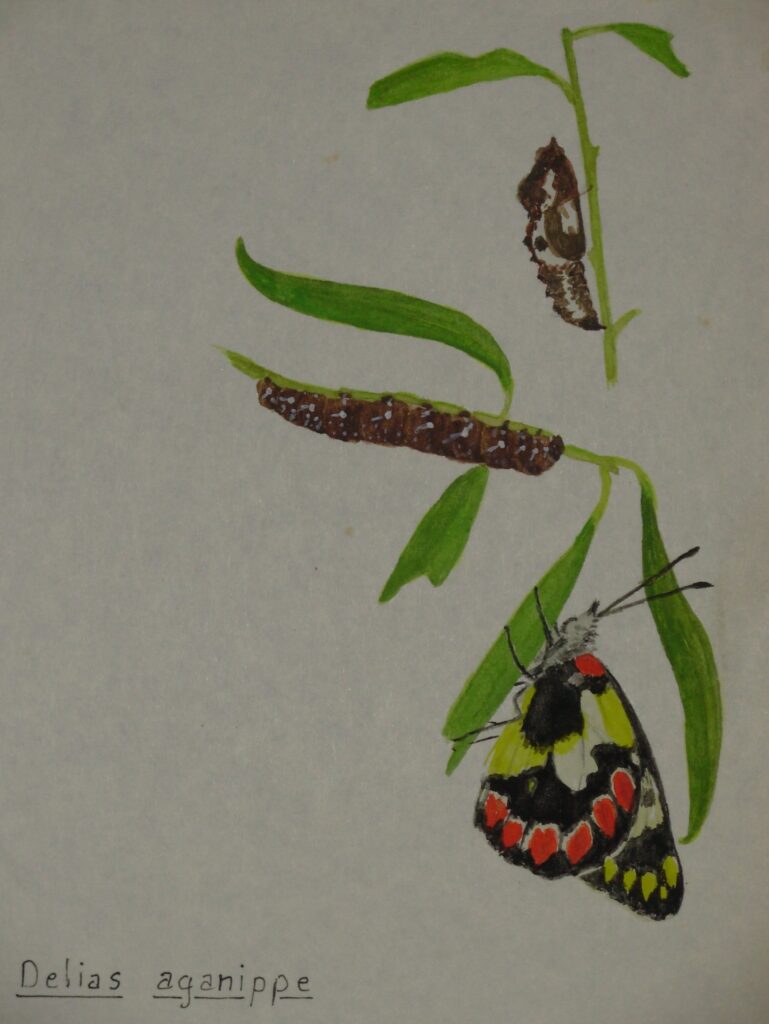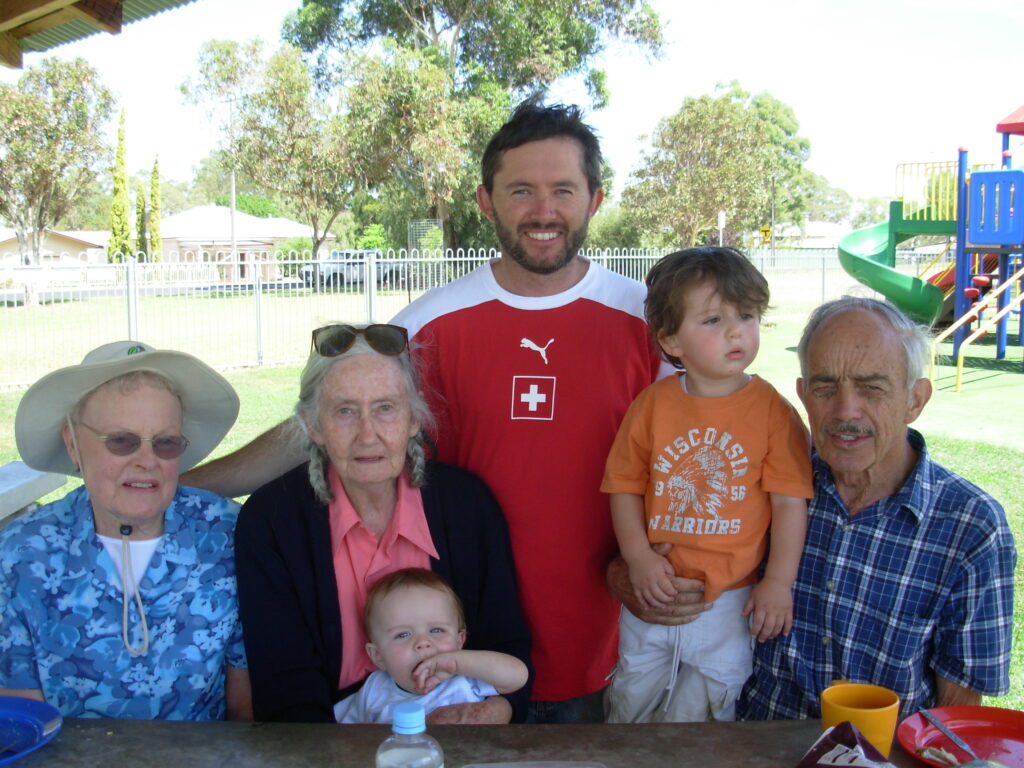Fond memories of Kath Alcock, our botanical artist and a dear friend
I first met Kath way back in 1992, when a university mate (Karen Beaumont) was undertaking a project at Sheriffs Reserve near Naracoorte in the Limestone Coast. I came down to help with the field work documenting the plants and management issues for the reserve. On this particular trip Karen wanted to identify a few plants and was informed that a botanist lived nearby. We visited Kath’s house and my first impressions were of a dark and seemingly overgrown front yard to an old stone home. We walked through a creaking metal front gate and up to the front door. As the door opened, I remember seeing a lady with long plated grey hair, quietly spoken, almost gypsy-like in dress, open up her house to us and into the front lounge to look at the specimens. At this point, I had no concept of who Kath really was, or of her expertise, nor the friendship we would eventually strike which would last for 25 years…
It would be some 5 years later when I had completed my degree, found work in my chosen field (natural resource management) and moved back home to Mt Gambier (1995), that I would be re-introduced to Kath and see the true friendship commence. Our second introduction came via fellow botanists John Samuel-White and Tim Croft. John was the grandson to famous explorer and ornithologist Samuel White and son to Captain Samuel Albert (or SA) White, also well known for his work in ornithology. So, John came from a family with a rich heritage in ornithology and conservation throughout South Australia. Anyway, John was a fabulous mentor and friend to me. I would often stay with John (and wife Moira) at Bordertown whereby he would take me out bush learning new plants and teaching me about what he knew about nature and how the bush should be managed. John would often hand me plant specimens to give to the ‘plant lady’ down at Naracoorte on my way home each trip. They were great times. John sadly passed away in December 2019 (aged 91).
Tim Croft, who worked for the Environment department at the time (and good friend to John) also showed me around parts of the region to become more familiar with the overstorey and understorey vegetation and highly recommended spending time with Kath. Tim is a scientist and has been very influential in vegetation management circles for many years and has produced region wide reports on flora and fauna which we still refer to today. Tim was always very respectful about Kath and her local knowledge in particular.
So, off we went as two plant and bug enthusiasts – Kath encouraged me to increase my knowledge about flora (and fauna), especially the little things by first learning the common plants, so that when you were out somewhere and you saw something different, you knew it was a new plant and an opportunity to learn more and how it fits into the broader ecosystem. And so it went on, with regular visits or stop overs at Kath’s to learn more about local plants and to increase the knowledge and understanding of how to manage the bush in the imaginary nature tool-box.
Kath taught me much about plants, but also about moths and butterflies. Her garden was full to the brim with native plants which were food sources for various insects, plus used as herbal remedies for any ailments or health problems which came along. I never forget learning about stinging nettle (both the native and introduced variety) which grew happily in Kath’s garden but was used in the kitchen. And what I didn’t know at that time was, it was not only a good herbal plant (for aches and pains) but also an important host plant for the Australian Admiral butterfly. A wander out into Kath’s garden resulted in seeing many things – and you may only move a few metres. You could find many scrunched up pieces of newspaper in the garden which Kath used for catching earwigs and snails which would use them for shelter. Kath took great delight in destroying those pests each morning. Kath made her own butterfly net which would sit close by and would be snatched and whooshed to catch any unsuspecting Cabbage White butterfly that would dare venture into her garden to lay eggs on her brassica’s. One year Kath caught over 150 of them, but in her last few years when living at Ponytz St would often say to me “I don’t see the numbers like I used to, GMO crops have put a stop to them”.
Native insects were also a passion for Kath and I remember looking at her butterfly and moth collections stored in old style museum boxes (some of which I still have today) to find many interesting species. Infact, specimens from Kath’s collection (as documented by Grund and Hunt in 1999) were of scientific interest including the Barred Grass-skipper (Dispar compacta) caught near Comaum and the Grassland Copper (Lucia limbaria) found at Kath’s childhood farm near Wolseley both of which are significant records in their own right. Kath painted the life cycle of many insects and often referred to herself as the ‘old moth’. I remember many a phone call that would come late in the evening, I would answer to hear, ‘hello, it’s the old moth here’.
Painting was a common pastime for Kath and often a plant specimen or an insect or fungi anyone would bring for identification would end up in her extensive collection of paintings with the important meta-data on the back, including its name. One shining example below of the Spotted Jezabel butterfly whereby you are learning about the butterfly’s life cycle and the important host plant for the caterpillar, all in one painting.
I will miss the regular phone calls about what we’ve seen or heard lately and the numerous donations of books, insect boxes, specimens, paintings or potted plants which I would fill my back seat with. Kath sadly passed away on 1st September 2023 (in Longridge, Naracoorte) and will be missed by many friends around the country who worshiped her wisdom, self-taught knowledge and experience in nature.
Kath’s family have arranged a memorial service at Mary Seymour Conservation Park on Saturday November 18th. Kath loved Mary Seymour and it is with great respect that we invite those who knew Kath to come out from 2pm and celebrate her life with us.
RIP my ‘old moth mate’



